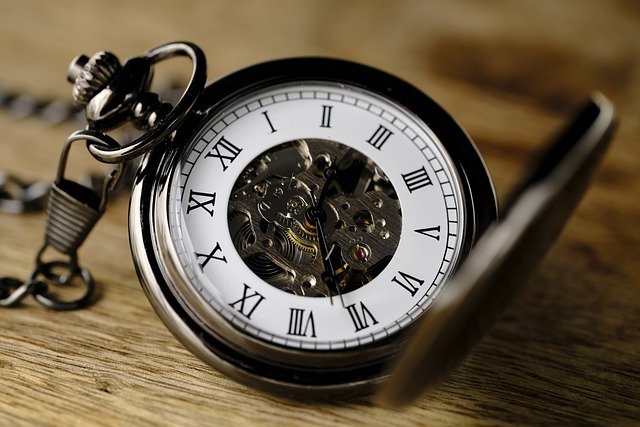The Timeless Appeal of Antique Watches: A Collector's Guide
Antique watches carry a sense of history and craftsmanship that modern designs often can’t replicate. Explore what makes these timepieces special and what to look for when considering one for collection or wear. Read to learn what you need to know before buying an antique watch

What Defines an Antique Watch?
The term “antique” typically refers to items that are at least 100 years old, though in the watch world, many collectors consider timepieces from the pre-1980s era as vintage collectibles. True antique watches were generally made before 1920, featuring mechanical movements that required manual winding. These timepieces were crafted during periods when watchmaking was considered both an art and a science, with each component meticulously created by skilled artisans. The craftsmanship involved hand-engraving, engine-turning (guillochage), and other decorative techniques that demanded years of apprenticeship to master. The dedication to quality and artistic expression makes these watches particularly valuable to collectors today.
The Most Sought-After Vintage Watch Brands
When exploring old valuable watches, certain manufacturers stand out for their historical significance and enduring quality. Brands like Patek Philippe, Vacheron Constantin, and Breguet have centuries-old legacies that command respect and high prices in the collector’s market. Mid-tier but equally fascinating brands include Omega, Longines, and Jaeger-LeCoultre, whose vintage models often represent excellent value. For collectors, the provenance of these timepieces adds significant value—watches owned by historical figures or associated with significant events can fetch astronomical prices at auction. Even less prestigious brands from the early to mid-20th century can hold considerable appeal if they feature unusual complications, rare dial variations, or limited production runs.
Understanding Watch Movements and Mechanisms
The heart of any antique watch is its movement—the internal mechanism that powers the timepiece. Vintage watches typically contain mechanical movements, which can be either manual-winding or automatic (self-winding). Before purchasing an antique watch, understanding the basic types of movements helps in assessing value and authenticity. Key movement makers like ETA, Valjoux, and in-house calibers from major manufacturers each have their own characteristics and reputations. The complexity of complications—additional functions beyond simple timekeeping, such as chronographs, moon phases, or perpetual calendars—significantly affects both the value and the maintenance requirements of a vintage timepiece. A watch with original, unmodified movement parts generally commands higher prices than one with replacement components.
Evaluating Condition and Authenticity
When considering antique watches for collection or investment, condition becomes paramount. Original dials without restoration generally command premium prices, while replaced hands, refinished dials, or polished cases can significantly reduce value. Patina—the natural aging of materials—is often prized by collectors when it develops organically over time. However, distinguishing between desirable patina and damage requires experience. Authentication is equally critical, as the vintage watch market sees numerous replicas and “Franken-watches” (timepieces assembled from parts of different watches). Working with reputable dealers, requesting detailed photographs, and researching serial numbers are essential steps before making significant purchases.
The Investment Potential of Antique Timepieces
Vintage watches have demonstrated remarkable investment potential over the past several decades. Certain models from prestigious manufacturers have appreciated significantly, outperforming many traditional investment vehicles. However, the market involves considerable knowledge and research to navigate successfully. Factors influencing investment potential include rarity, condition, provenance, and historical significance. Limited production models or those with unusual features tend to appreciate more rapidly than standard versions. For collectors considering watches as investments, focusing on pieces from established manufacturers with strong market presence and historical significance offers the greatest potential for appreciation. Nevertheless, the primary motivation for most collectors remains passion rather than profit.
Price Guide for Antique and Vintage Watches
The price range for antique and vintage watches varies dramatically based on brand, age, condition, and rarity. Understanding market values helps collectors make informed purchasing decisions and avoid overpaying.
| Brand & Model Category | Typical Price Range | Key Value Factors |
|---|---|---|
| Entry-Level Vintage (Hamilton, Bulova, Timex) | $200-$1,500 | Condition, rarity of dial variant, original box/papers |
| Mid-Range Collectibles (Omega, Longines) | $1,500-$8,000 | Original parts, movement type, historical model significance |
| Luxury Vintage (Rolex, Patek Philippe) | $8,000-$50,000+ | Provenance, condition, rarity, complete documentation |
| Museum-Quality Antiques (pre-1920) | $15,000-$500,000+ | Historical significance, maker reputation, complication type |
| Record-Setting Pieces | $1M-$30M+ | Famous previous owners, extreme rarity, historical importance |
Prices, rates, or cost estimates mentioned in this article are based on the latest available information but may change over time. Independent research is advised before making financial decisions.
Caring for Your Antique Watch Collection
Maintaining vintage watches requires specific knowledge and careful handling. Unlike modern watches, antique timepieces are more susceptible to environmental factors and improper storage. Mechanical watches should ideally be serviced every 3-5 years by a specialist with experience in vintage movements. Between services, proper storage in watch winders or watch boxes with controlled humidity helps preserve the mechanisms and materials. Exposure to strong magnetic fields, extreme temperatures, or moisture can damage delicate internal components. When wearing antique watches, understanding their limitations—particularly regarding water resistance, which was minimal in older timepieces—helps prevent accidental damage. Documentation of service history and maintaining original boxes and papers also preserves the watch’s value for future generations.
The world of antique watches offers depth, history, and mechanical fascination that continues to attract new enthusiasts. With proper research and care, these timeless treasures can provide decades of enjoyment while potentially appreciating in value. Their connection to history and the artisanal skills of past generations makes them more than mere accessories—they are portable artifacts that continue to tell time long after their makers have passed into history.




